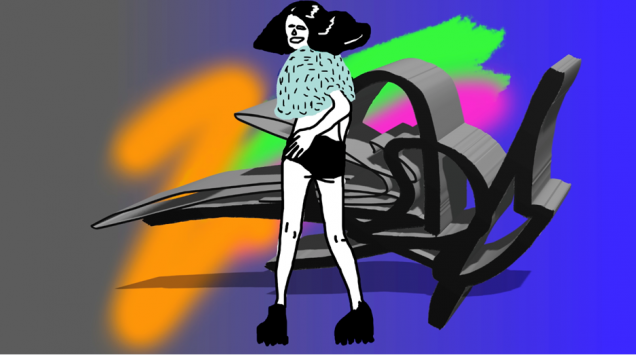HB No 6 Hors Page - Centre Clark
The Joyce Yahouda Gallery is co-founder and co-producer of HB Magazine.
Opening: January 12, 2017
8:00 pm
HB Curators: Marie-Pier Bocquet, Kaeten Bonli, Jonathan Demers, Corine Lemieux, Yan Romanesky, Julie Tremble, Joyce Yahouda
Curators CLARK: Roxanne Arsenault, Manon Tourigny
HB strives to present current drawing practices in a printed magazine format; a kind of exhibition on paper where works unfold, come together and interact within its pages. First published in 2013 and meticulously assembled by a team of curators, HB presents an impressive selection of emerging and established artists from Québec, Canada and beyond.
Following its two thematic issues (No. 4 Erotica, and the soon to be released No. 5 Structures), this sixth opus looks at drawing practices that reach beyond the page and which are largely “un-representable” in published form. The selected works demonstrate obvious challenges in terms of print reproduction, where reducing them to a single page robs them of their spatial, temporal, immersive and interactive qualities. These works may reveal the limitations of the printed format, but not those of HB’s curatorial model, which, once transposed to the exhibition space of the gallery, manages to maintain its coherence, flair and biting wit. While the curated works in this exhibition are not entirely representative of the strategies and approaches used by artists who draw off the page, they express a unique vision that reflects the spirit of HB. As such, the exhibition is presented as a kind of magazine issue in and of itself, available for a limited time within a limited space.
Digital drawing and 3D rendering are well represented in the practices of the ten artists featured here, many of whom work in animation, such as Amy Lockhart. In her work, parallel mini-narratives develop through irreverent, crude and jolting animations that recall the sonic universe of 8-bit video games. In Jill, by Lilli Carré, a female figure, apparently deprived of all free will, shape-shifts and collapses before our eyes in response to the comments and commands of an off-camera narrator. The theme of deconstruction is also present in Barry Doupé’s piece titled Whaty. Abstract human faces form and dissolve, appearing and disappearing as coloured shapes that melt away the moment they become recognizable. Scottish duo Dennis and Debbie Club use computer-generated imagery (CGI) to create complex, detailed and surrealistic worlds that seek to sublimate the traumatic experience of grief and to provoke a sensorially immersive experience.
Equally engaging is Jess Johnson’s installation, which juxtaposes wall drawing and video. The result is an in situwork of wide-ranging possibilities, expressed in her signature style of drawing that combines superimposed motifs, shapes and colours in futuristic, kaleidoscopic compositions that offer viewers the opportunity to physically immerse themselves in her work. In contrast, Jenny Lin’s Replay: A Memory Gameinvites the viewer to enter a virtual universe that can be explored through a computer monitor in the gallery. Based on the ‘point-and-click’ style of gaming where players navigate through various landscapes, Replay contains a fragmented and changeable narrative structure inspired by the hazy recollections of an accident. Elsewhere, Adrian Norvid engages viewers in an entirely different way. His obsessive, satirical and bitingly humorous drawings come together in three-dimensional (or architectural) form, serving as both backdrop and relic of his performance practice.
Pierre Hébert’s Scratch demonstrates a rare example of gestural drawing in this exhibition. Drawing directly on a filmstrip’s surface, his animations reveal the intrinsic cinematographic qualities of his material through a rapidly flickering succession of scratched lines. The sequencing of abstract forms is also found in Sophie Latouche’s caustic animations, where lines and coloured shapes create an endless loop that mimics the jerkiness of animated gifs.
Echoing the form of the printed book, Jacques Desbiens’Tractatus Holographis is an intriguing holograph that is impossible to experience beyond its precisely controlled optic parameters. This holographic book, whose pages turn with the movement of the viewer, is a nod to HB’s mandate of presenting exhibitions on paper that one experiences page after page. The fascinating and mysterious effects of Desbiens’ hologram serve as confirmation that some works can only be experienced in real space, beyond the page.
- Marie-Pier Bocquet (translation : Jo-Anne Balcaen)
News
No news at the moment.

